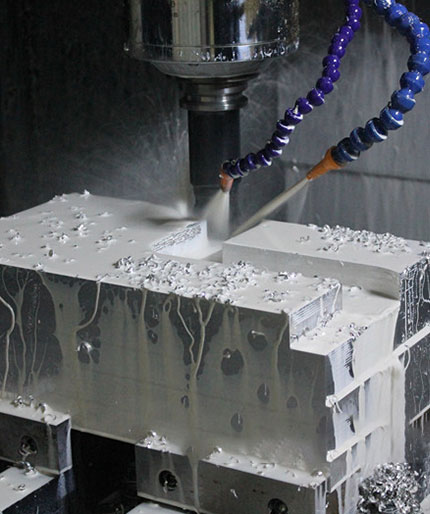In order to ensure that sheet metal satisfies the requirements that were discussed earlier in this paragraph, the surface of the metal can be treated using the following processes:
Galvanization is a process that can be defined as the use of electrolysis to form a uniform, dense layer in the surface of the product, which is combined with a good metal or alloy deposition. Galvanized products can be found in a variety of industries, including automotive, aerospace, and construction. Galvanization is the term used to describe this process.
-
Powder coating is a process that happens when a powder is polarized and evenly attached to the surface of the product on the opposite side
-
This gives the product an even and protective coating
-
During the process, the powder is subjected to the influence of an electric field, which results in the observed phenomenon
-
In order for the body to undergo its transformation, this step is required
-
The utilization of static powder coating does not contribute to the pollution of the atmosphere; the powder itself can be recycled, which helps to cut down on the expense of the materials; the coating is resistant to the corrosion that is caused by acids, alkalis, and salts; and it also possesses a higher level of adhesion
Electrophoresis: The charged coating ions move from the coating layer to the product's surface during the coating process known as an electrophoretic coating. This change takes place as a consequence of the anode and cathode switching places in their respective roles. It is an essential component of the change that takes place as a result of the chemical reaction. Electrophoretic coating outperforms other coating processes in terms of coating fullness, uniformity, smoothness, smoothness, hardness, adhesion, corrosion resistance, impact performance, and permeability. This is because the electrophoretic coating is applied in a much thinner layer than other coating processes. This is because, in comparison to other coating processes, the electrophoretic coating is applied in a layer that is significantly less thick. These beneficial effects can be attributed to the electrostatic ionization that the electrophoretic coating provides. In spite of the fact that black is the color that is most commonly associated with electrophoretic material, a wide variety of other colors can also be purchased.

Plastic dip: plastic dip is a new type of technology for the process of treating metal surface corrosion, metal preheating, leaching, and curing. Plastic dip can also be used to treat other types of metal surface damage. Plastic dip can also be used to treat various forms of damage that can occur to the surface of the metal. The plastic dip will be used for each of these three steps throughout the entire process. As a part of the leaching process, the heated metal will stick to the material; the amount of time required for the process, in addition to the thickness of the material, will increase in direct proportion to the degree to which the metal was heated. The plastic coating has a dark color, is resistant to acids and alkalis, provides superior cold insulation, and has anti-corrosion properties. Additionally, the coating offers superior cold insulation. The coating exhibits each and every one of these traits and characteristics.
Please keep in mind that the information that has been provided for you in the preceding paragraphs is merely for your reference. This is something that you should keep in mind at all times.
If you have a project that requires assistance and would like to make use of our CNC Machining, Metal Stamping, or Metal fabrication services, please get in touch with us as soon as possible.
What different kinds of processing objects are typically utilized during the course of the CNC milling process?
CNC milling machines are not only able to process all of the different kinds of parts that are able to be processed by conventional milling machines, but they are also able to process more complex surface parts, which conventional milling machines are unable to process. Conventional milling machines are limited in their ability to process a wide variety of parts because of the limitations of their design. Because of the constraints of their design, conventional milling machines are restricted in the breadth of the materials and shapes that they can cut and shape into finished products. Because of the characteristics of CNC milling machines, a variety of common processing objects, such as flat parts, variable angle parts, space surface contour parts, punching parts, threaded parts, and so on, are examples of processing objects that are suitable for CNC milling machines. Other examples of processing objects that are suitable for CNC milling machines include threaded parts and punching parts. Other kinds of objects that are suitable for processing include threaded parts and flat parts, for example.
Flat parts
The framework of the aircraft is comprised of a variety of flat parts, including covers, cams, and the overall structure itself. The computer numerically controlled milling machine directed the majority of its efforts toward the flat portions of the objects that it was working on because these regions required the least amount of modification.
Variable angle parts
The working surface and the horizontal angle of the continuous variation of the variable bevel parts are the two primary characteristics that define variable bevel parts in general. Variable bevel parts can also be defined by the fact that they have a continuous variation. Another way to define variable bevel parts is by the fact that they have a continuous variation in their bevel angle. The utilization of an aircraft on an oblique angle beam is a good illustration of a variable bevel part. This is meant to serve as an example.
Space surface contour parts
The term "spatial surface" refers to the finished product that is produced when the surface of a component of this kind is machined. The mold, the blades, and the propellers are some examples of components that are commonly found on the space surface. Other components of a comparable nature also fall into this category. Milling a component of this kind requires a steady point of contact to be maintained between the milling cutter and the surface that is being machined throughout the process.
The main point of contention in the conflict
CNC milling machines are what are used for the punch operation, which, depending on the specifics of the situation, can be carried out in a wide variety of different ways. Such as drilling, expansion, hinge, and boring, to name a few; however, the drilling hole function on a CNC milling machine is not very convenient because it requires the drilling tools to be changed frequently. This can be a time-consuming process. For illustration, drilling, expanding, and boring are all examples of the same thing.
